Growing yellow succulents have become a trend all over the world in recent times. They would bring a fantastic pop of color once you grow them in your garden.
On the other hand, if your ordinary green succulent is turning yellow it could be a sign of a root rot. So, you must go with succulents which are yellow in color when they are healthy.
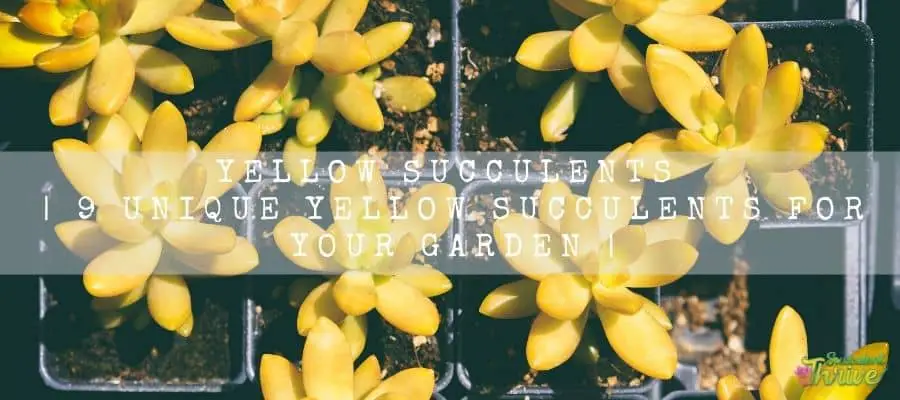
You could use succulents from groups such as Sempervivum, Sedum for this purpose. Further when you grow them, ensure that you are exposing these plants for bright sunlight.
Consequently, it will help them to become more vivid in their colors.
Sedum Makinoi ‘Ogon’
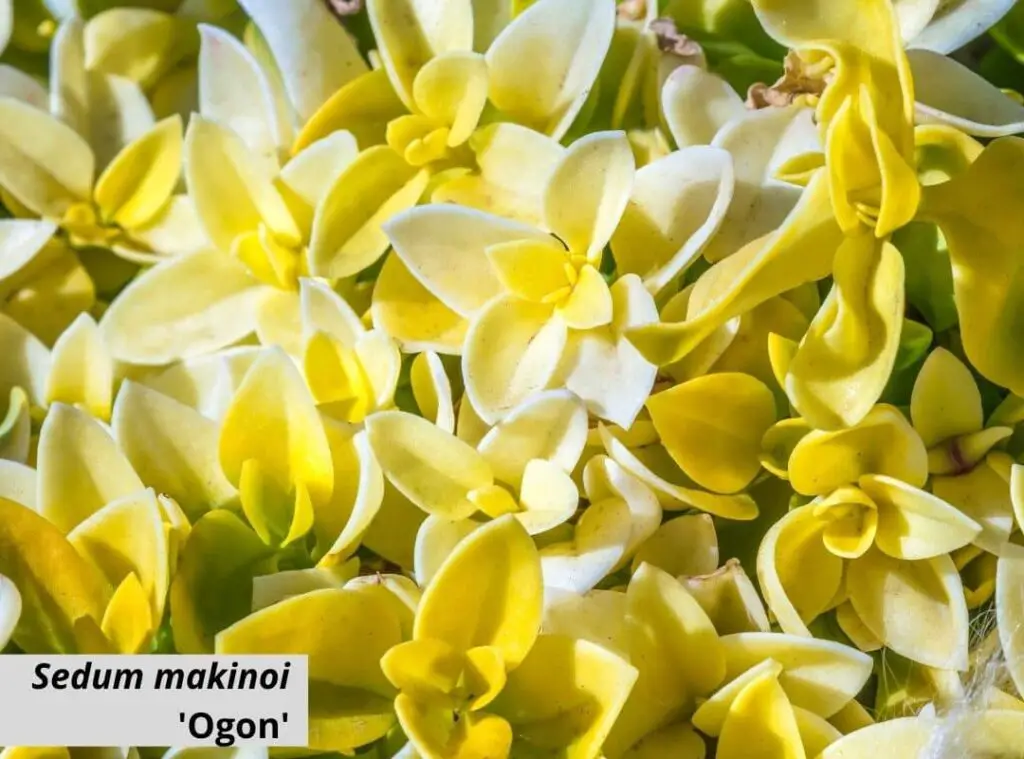
Sedum Makinoi ogon mainly could be spotted growing as ground covers. Further they tend to grow in a mat forming manner.
In terms of the sizes, these yellow succulents would be about 2 inches in height and 12 inches in width. These sedum plants would produce round shaped leaves and they would be golden yellow in color.
Those leaves would be about 0.25 inches in size. They produce flowers which are yellow-green in color during summer.
They will further resemble star shapes. Sedum Makinoi ogon plants fall under USDA hardiness zones 6a-9b. In terms of the origin of this plant, Japanese are in fact the cultivator of Sedum Makinoi.
Golden Japanese stonecrop is a common name of this plant and Sedum Makinoi is the scientific name of them.
Sedum sunsparkler ‘Angelina’s teacup’
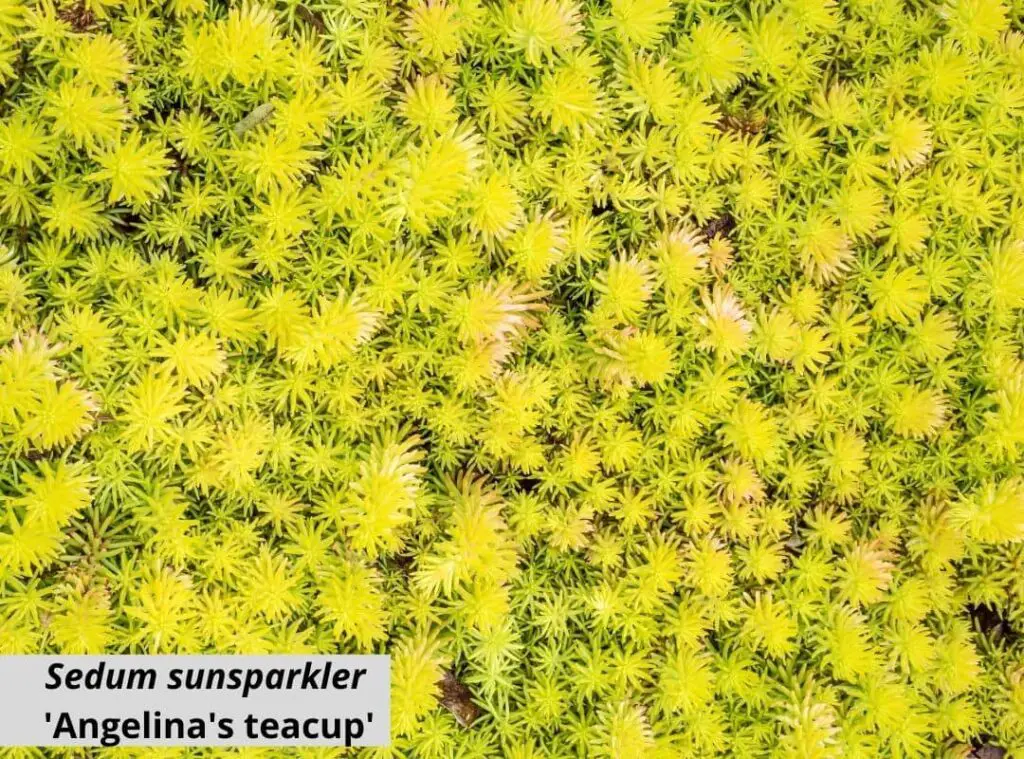
Sedum sunsparkler angelina’s teacup plants are hardy and found in USDA hardiness zones 4-8.
In terms of the sizes of these yellow succulents , they would reach 1’-12’ in height. Their spread would be about 12’-18’.
Sunsparkler angelina’s teacup plant is a perennial plant, and it is more like a dwarf succulent. You could spot their foliage mainly in yellow.
Their foliage would tend to look like a needle. When you expose them to colder weather conditions or high heat levels, chances are that you could expect them to form fiery orange leaf tips.
You could mainly spot them being grown as ground covers. In addition to that you could grow them indoors in containers as well.
Angelina’s teacup plants tend to grow more densely and in a branching manner. They would usually not flower. Hence, they are trying to keep their unique looks.
Sedum Nussbaumerianum
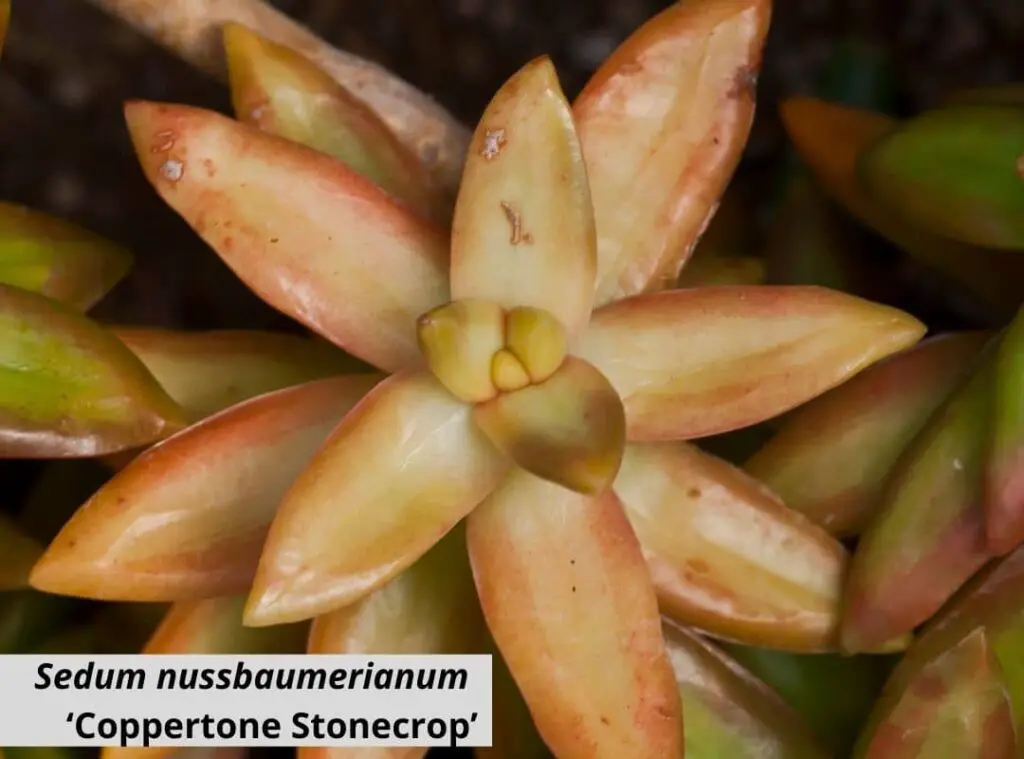
Yellow Sedum Nussbaumerianum plants are endemic plants to Mexico. This is introduced as Coppertone Stonecrop commonly.
This Sedum type is yet another low growing succulent type which would produce offsets. Their leaves are usually plump and long too.
Their colors would vary from light yellow green to coppery orange when you expose them for bright sunlight. You can also consider this as orange succulent too.
Their stems would form in a sprawling manner, and they will start spilling out when they become older.
This is a flowering Sedum, and they would produce flowers in clusters. They are white and would further carry a light fragrance as well.
You could grow these yellow succulents anywhere be it indoors or outdoors. In terms of the sizes of the plants, they would be 20 cm in height and 60-90 cm in width.
USDA hardiness zones 9-11 will perfectly fit in for these plants to grow well.
Aeonium Arboreum Sunburst
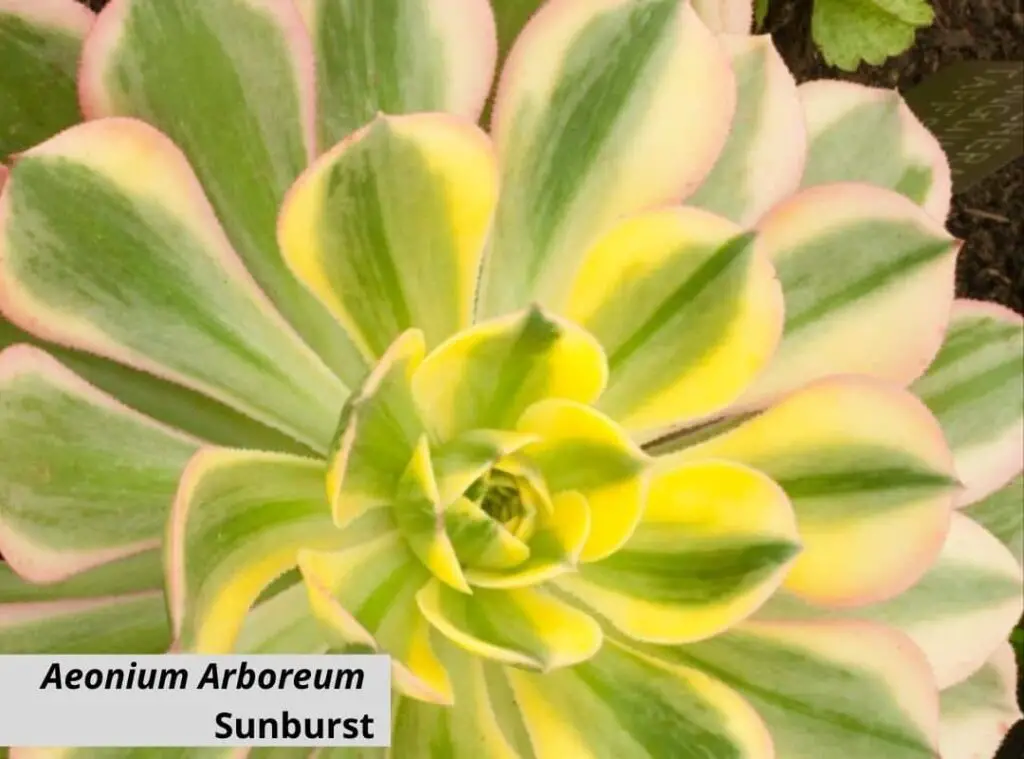
Aeonium Arboreum Sunburst plants tend to produce big rosettes. Further they are a variegated plant type which make branches also.
Sunburst plants would produce leaves in either green, creamy yellow or white colors. They would further consist of pink edges as well.
The exposure for bright full sunlight will make them become coppery red in color. On the other hand, their leaf center will remain light yellow.
In terms of the sizes of these plants, they would rise to 30 inches in height. On the other hand, their platter sized rosettes would be about 10 inches widespread.
When it comes to flowering of these yellow succulents, you could expect them to flower with pale, yellow-colored flowers. These are originating from the Canary Islands. They are hardy in USDA hardiness zones 9-12.
Sempervivum cmirals yellow succulent
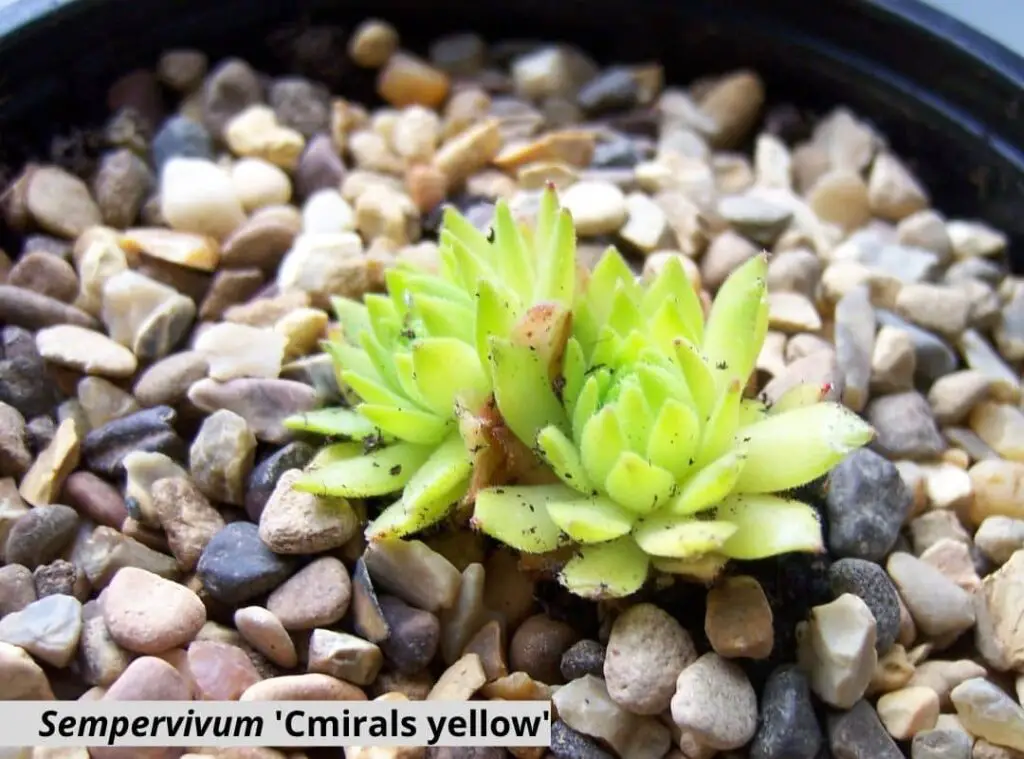
Sempervivum montanum is the scientific name of these plants. Cmiral’s yellow plants are what you could call them in common.
Their leaves would form in rosette type. Those leaves will change their color from pale green to bright yellow.
USDA hardiness zones 4a-9b would suit them the best. You could expect them to flower during summer.
This is known as an uncommon Sempervivum type. They are originally from Czech Republic.
Parodia leninghausii ‘golden ball cactus’
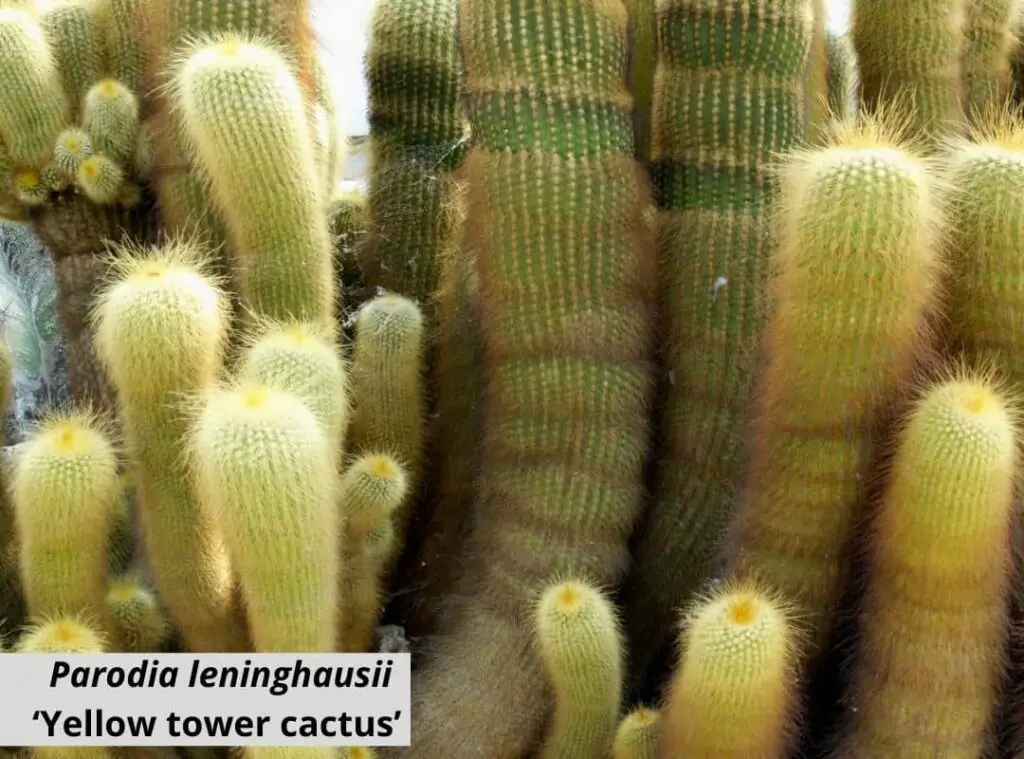
Parodia leninghausii are originally from Brazil and from South America. They would form yellow-golden spines and would produce silky blooms in yellow during summer.
Parodia leninghausii stem would tend to take a globular shape first and then later become columnar along with ribs. In terms of the sizes, they would rise to 100 cm in height 8-12 cm in diameter.
They will consist of harmless bristly spines which you could spot in gold color. Golden ball cactus and yellow tower cactus are the common names of these plants.
They would produce flowers in yellow. They are fond of growing in USDA hardiness zones 9b-11b.
Astrophytum asterias ‘Sea-Urchin Cactus’
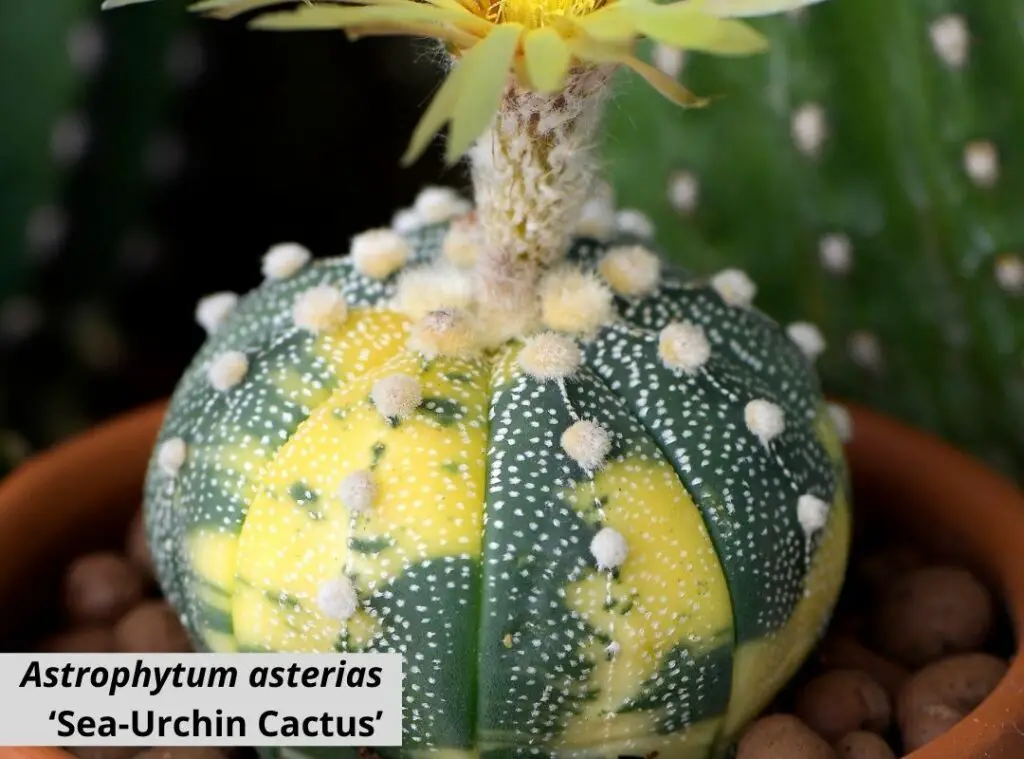
Yellow Astrophytum Asterias is a nursery produced cultivator. They come up with a flat stem which is unique to them.
They do not have spines covering the stems like most of other succulents do. Having said that they comprise hairs though. They would produce flowers in yellow.
Those blooms are large, and chances are that you could spot them even bigger than the plant sizes. These plants would prefer to grow in USDA hardiness zones 5a-5b.
Crassula ovata ‘Hummel’s Sunset’
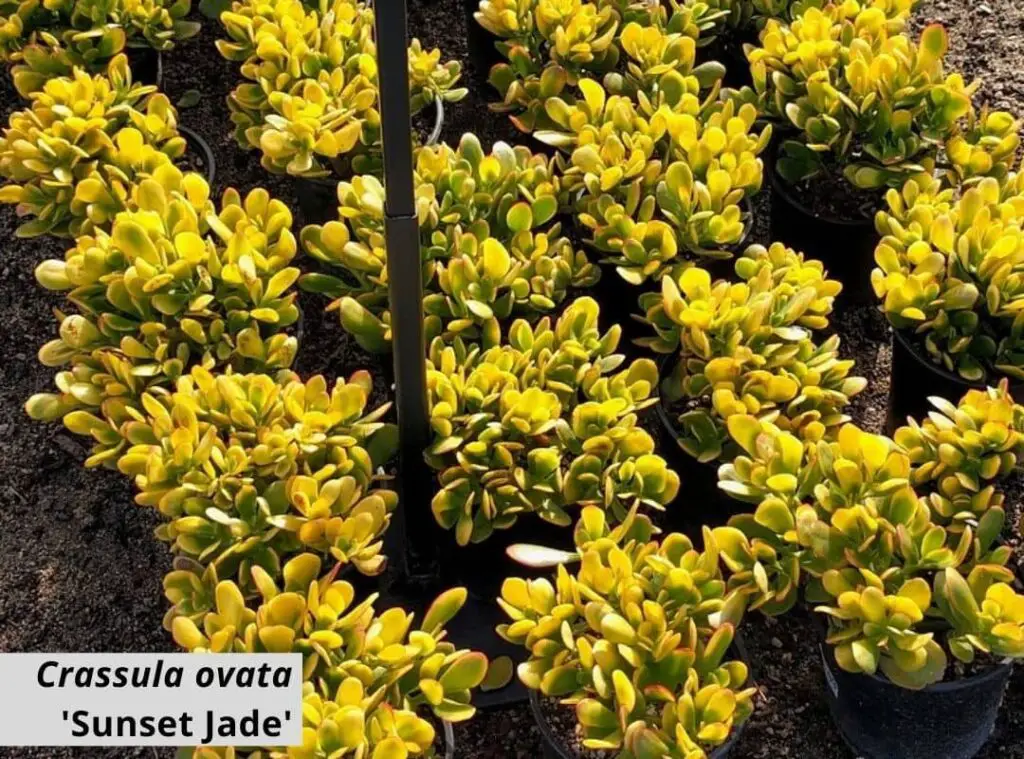
Crassula ovata ‘Hummel’s Sunset plants mainly grow as shrub types. They would further consist with oval shaped glossy leaves which you could spot in green along with yellow edges.
When you expose them to bright sunlight, they form red margins in the leaves. In terms of the sizes, they would grow up to 36’’ (91cm) in height and 24’’ (61cm) in width.
Hummel’s Sunset plants would produce blooms in white during fall and in winter. They would perfectly fit in for both indoor gardening and for outdoor gardening as well.
However you should make sure that you are providing the right growing conditions for them. They are native plants in South Africa and in Mozambique. USDA hardiness zones 9a would suit them the best.
Echeveria Agavoides ‘Yellow Ebony’
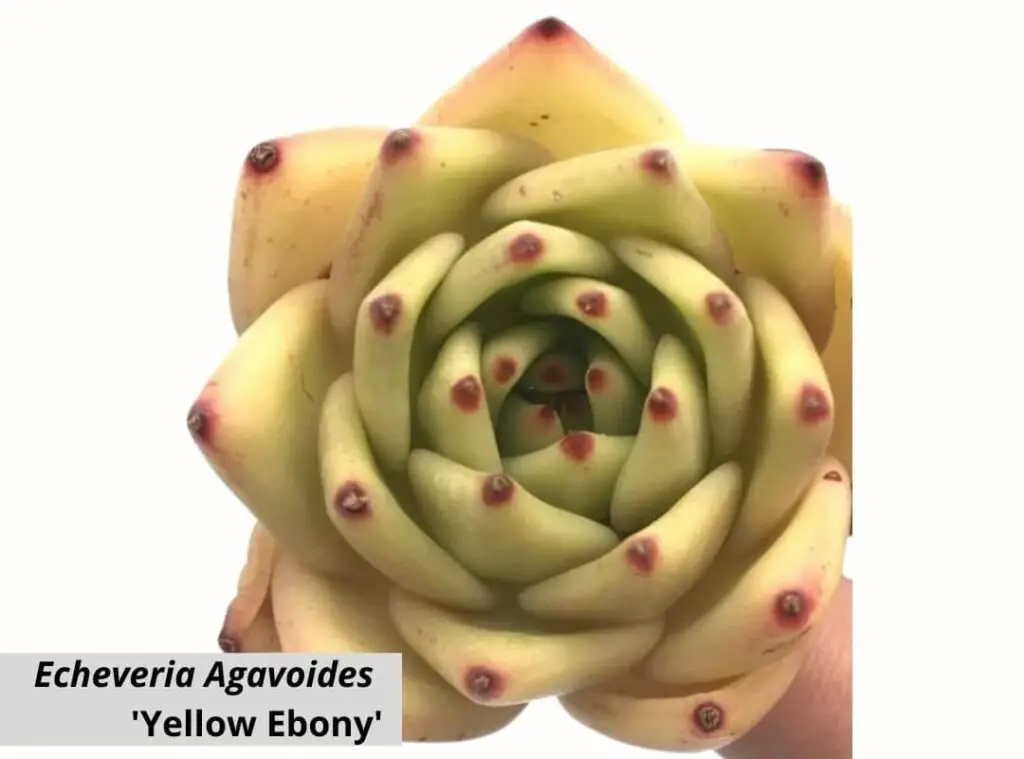
Echeveria Agavoides ‘Yellow Ebony’ is a slow growing plant which produces reddish pink flowers which resemble star shape.
When it comes to their leaves, they consist of sharply pointed leaves and fleshy leaves. Their leaves form in rosette shape.
The colors of the leaves would be vivid red to deep purple. Further they would be about 30 cm in width. Usda zones 10-12.zones would suit these plants the best.
Special care tips for yellow succulents
You could ideally use the yellow succulents in Succulent arrangements where they have a similar color tone.
Alternatively, you may grow them along with contrasting-colored succulents such as blue, red, purple succulents.
As aforesaid, when you expose them for bright sunlight, it will make these succulents become golden yellow in color.
Apart from that, when you water them less often, that would also make these succulents beautifully stressed and help to become golden yellow in color.
As you may already know, succulents are very much used to growing in long drought periods, and they would expect you to water them with a soaking and drying method.
Literally you need to water them when their soil is dry and further when you spot their leaves starting to feel limo too.
After that make sure that you let the plant deeply drench and skip watering them once again until they become entirely dry.
Further you need to ensure that you are growing them in a well draining soil mix too. Ideally you may use a gritty soil mix which has a high component of coarse sand, perlite pumice.
Alternatively you may grow them in a readily made succulent soil mix or in a cactus soil mix. That will consequently allow them to form vigorous roots and avoid any root rot too.
Further make sure you are growing them in a pot which has enough draining holes. These conditions will help them to show the colorations of these yellow succulents.
Last but not least, you may come across seasonal color changes also among the succulents.
For example, if we take yellow, golden, and orange succulents you could spot them becoming more vibrant along with yellow pigments during seasons like spring and in summer.
Read Next: Orange succulents | 13 Unique Orange Succulents For Your Garden |
